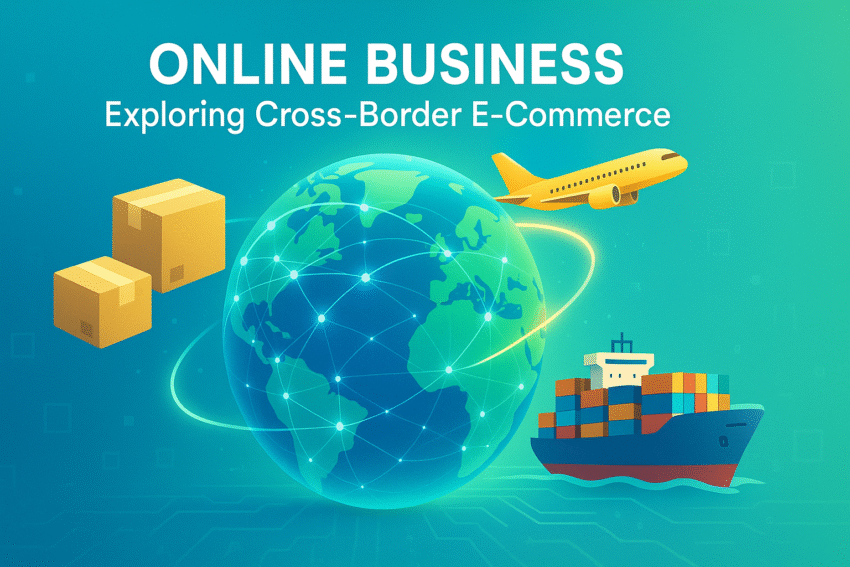Online Business: Exploring Cross-Border E-Commerce 🌍
In today’s digital age, the world is more connected than ever before, and businesses are no longer confined to their local markets. Cross-border e-commerce offers a massive opportunity for growth, allowing businesses to tap into international markets with ease. But how does one navigate the vast ocean of cross-border e-commerce? Let’s dive in! 🏊♂️
Table of Contents
1. Introduction to Cross-Border E-Commerce
2. The Benefits of Going Global 🌎
3. Challenges and How to Overcome Them 🤔
4. Strategies for Successful Cross-Border Selling 🚀
5. Conclusion: The World is Your Marketplace
6. FAQs
Introduction to Cross-Border E-Commerce
Cross-border e-commerce refers to online trade between businesses and consumers that are located in different countries. With a simple click, a consumer in France can purchase a product from a seller in Japan. This seamless global interaction opens up a world of opportunities but also requires an understanding of international markets, logistics, and customer preferences.
The Benefits of Going Global 🌎
Expanding your business internationally can lead to significant benefits:
1. Access to New Markets: By reaching out to international audiences, you can significantly increase your customer base and tap into markets that might have a higher demand for your products.
2. Increased Revenue Potential: Diversifying your market presence can lead to increased sales and revenue, especially during local market slowdowns.
3. Enhanced Brand Reputation: Establishing a presence in multiple countries can elevate your brand’s global recognition and credibility.
Challenges and How to Overcome Them 🤔
While the prospects are exciting, cross-border e-commerce comes with its set of challenges:
1. Cultural Differences: Understanding cultural nuances is crucial. Tailor your marketing strategies to align with local customs and preferences.
2. Logistics and Shipping: Efficiently managing international shipping can be daunting. Partnering with reliable logistics providers can streamline this process.
3. Legal and Regulatory Compliance: Each country has its own set of regulations. Ensure compliance to avoid legal pitfalls.
Strategies for Successful Cross-Border Selling 🚀
Here are some strategies to help you succeed in cross-border e-commerce:
1. Market Research: Conduct thorough research to understand the target market’s needs, preferences, and competition.
2. Localize Your Website: Offer a localized experience by translating your website and tailoring content to resonate with the local audience.
3. Payment Solutions: Provide multiple payment options to cater to varying preferences and increase conversion rates.
4. Customer Support: Offer multilingual customer support to assist international shoppers and enhance their experience.
Conclusion: The World is Your Marketplace
Cross-border e-commerce is not just a trend; it’s the future of online business. By embracing this opportunity, you can unlock new revenue streams, expand your brand’s reach, and stay ahead of the competition. Remember, the world is your marketplace, and with the right strategies, success knows no borders! 🌐
FAQs
1. What is cross-border e-commerce?
Cross-border e-commerce refers to the online trade of goods and services between businesses and consumers located in different countries.
2. How can I start selling internationally?
Start by researching target markets, localizing your website, offering multiple payment options, and ensuring compliance with international regulations.
3. What are the main challenges of cross-border e-commerce?
The main challenges include cultural differences, logistics and shipping, and legal and regulatory compliance.
4. How can I ensure successful international shipping?
Partner with reliable logistics providers and consider localized fulfillment centers to ensure timely and efficient delivery.
5. Why is localization important in cross-border e-commerce?
Localization enhances customer experience by making your website more relatable and accessible, thus increasing the likelihood of conversion.


